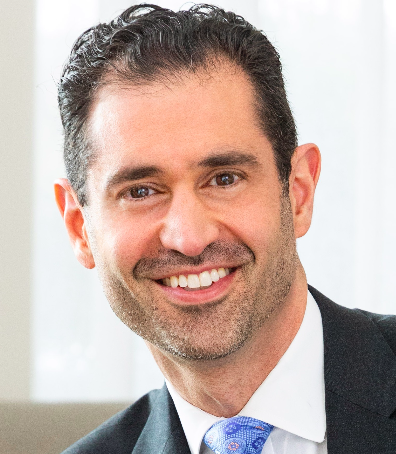Not All DED Patients Have Chronic Symptoms
By Richard A. Adler, MD, FACS; and Nathan M. Radcliffe, MD
Specialists now have a topical medication specifically approved for the short-term (up to 2 weeks) treatment of the signs and symptoms of dry eye disease (DED). With the availability of Eysuvis (loteprednol etabonate ophthalmic suspension 0.25%; Kala Pharmaceuticals), we have an opportunity to think differently about dry eye disease.
Since the introduction of cyclosporine for dry eye almost 20 years ago, some eye care specialists have tended to concentrate only on the chronic nature of DED. Often, the condition is chronic; however, there are two other presentations that have received much less attention. These are acute-on-chronic, with situational exacerbations of signs and symptoms (ie, dry eye flares), and acute only, characterized by flares in the absence of chronic disease.
Episodic DED with varied intensity is caused by common triggers such as allergies, contact lens overuse, increased screen time, and direct forced air from heating and cooling vents.1-3 These triggers can worsen chronic dry eye; however, in some cases, they create episodic, situational dry eye that is not part of a chronic disease state. Most patients with chronic DED also suffer episodic dry eye flares that typically cannot be managed with ongoing maintenance therapy and/or artificial tears.4-7
The Scope of the Problem
We know that flares occur in about eight out of 10 dry eye patients. Furthermore, half of DED patients experience flares without continuous symptoms.8-11 For patients in this latter group, chronic therapy may not be the best treatment option. It is important we ask ourselves the tough questions about the disease state as it pertains to the specific patient sitting in the chair in front of us as patients may not proactively share information about their flares unless prompted. A survey of more than 200 eye care providers found that only 40% believed that their patients suffered dry eye flares when, in fact, the number is closer to 80% (data on file, Kala Pharmaceuticals).
Having the first and only steroid that is indicated specifically for the short-term treatment of the signs and symptoms of DED gives us confidence in our selection. We are well aware that as a class, steroids have been implicated in IOP elevation, therefore safety is top of mind in our glaucoma patients. Loteprednol etabonate ophthalmic suspension 0.25% was studied in the largest clinical program in DED to date— Short Term Relief in Dry Eye or STRIDE trials—including more than 2,800 patients.12
In STRIDE, researchers observed statistically significant improvement in the measures of conjunctival hyperemia and patient-reported ocular discomfort severity score. Subjects assigned to treatment with loteprednol etabonate ophthalmic suspension 0.25% experienced symptom improvement as early as day 2. Loteprednol etabonate ophthalmic suspension 0.25% demonstrated a beneficial safety profile: IOP was similar between the vehicle and loteprednol etabonate ophthalmic suspension 0.25% arms. In treatment and vehicle groups, respectively, 0.6% and 0.2% of subjects experienced a >5 mm Hg increase from baseline resulting in an IOP measurement of ≥21 mm Hg in one or both eyes at any post-baseline visit.12
Kala’s loteprednol etabonate ophthalmic suspension 0.25% formulation is unique in that it is formulated with AMPPLIFY, the company’s proprietary mucus-penetrating particle technology. These nanoparticles of ~300 nm in diameter are coated to facilitate their penetration of the mucus barrier. This allows the drug to spread more uniformly on the ocular surface to achieve longer retention and allow for enhanced penetration to the target tissues.
Although we have been using steroids to treat DED for many years, often as induction therapy along with a chronic medication and for highly symptomatic patients, now we have the confidence of clinical data for an on-label, branded medication to support the decision. Furthermore, for those DED patients suffering dry eye flares alone, this might present an opportunity as a first-line prescription choice and/or bridge to chronic therapy based on case presentation.
Practical Takeaway
Short- and long-term therapies should be thought of as complementary to each other. We use loteprednol etabonate ophthalmic suspension 0.25% as an adjunct with chronic therapy—dry eye flares are a reality of chronic disease, and we also use it in patients who have normalcy punctuated by flares. It is important to note that, just because a patient on chronic therapy has periods of exacerbation, this does not mean their chronic medication failed. Oftentimes, however, we see patients who present with dry eye complaints who were previously prescribed chronic therapy. After further discussion, we find these folks have since become nonadherent to their drops. It has been shown that, on average, 80% of dry eye patients discontinue their chronic prescription medication by 4 months.13 For some of these patients it may be because they only have episodic disease.
The option of loteprednol etabonate ophthalmic suspension 0.25% fills a gap in the spectrum of DED and better matches patients’ psychology for those who will only take their medication for a short time when they are feeling symptomatic. This is particularly applicable to our glaucoma patients for whom dry eye is exceedingly common and who are often taking multiple pressure-lowering agents. They already struggle to remain compliant with their medication regimen, making a shorter-term drop for dry eye flares an appropriate option.
It is important our patients understand that a goal of DED treatment, whether it be chronic therapy, tears, or steroids, is not to cure them but rather to reduce the frequency and severity of symptoms. It may be helpful to ask patients to pick one symptom that bothers them the most, then use that to track the effect of therapy.
Dry eye flares are not limited to symptoms only, which may be another reason why periods of exacerbations are missed. Flares can occur in asymptomatic patients and show up with signs like increased corneal staining, decreased tear breakup time, worse MMP-9 compared with visit on visit or abnormal meibography. In some situations, patients may be experiencing a flare and not have chronic disease. Although we often use symptoms as a global indicator of treatment success, they do not tell the whole story and it is well known that signs and symptoms do not always correlate in dry eye. Many patients who have recurring dry eye flares may ultimately develop chronic disease, but that is not always the case. Other inflammatory conditions are intermittent without becoming chronic, like contact dermatitis, gastritis, bursitis, and plantar fasciitis, to name a few.
Conclusion
Eysuvis is the first and only FDA-approved corticosteroid indicated for short-term (up to 2 weeks) treatment of the signs and symptoms of DED. Many more patents than we may recognize suffer from periodic exacerbations of symptoms—and signs—and for them, chronic therapy will not provide relief. Loteprednol etabonate ophthalmic suspension 0.25% has an important place in our preventive medicine toolkit and effectively fills a gap in our treatment options.
 Richard A. Adler, MD, FACS, Belcara Health, Baltimore; Assistant Professor of Ophthalmology, Wilmer Eye Institute, Baltimore. Dr Adler can be contacted by email at: [email protected]
Richard A. Adler, MD, FACS, Belcara Health, Baltimore; Assistant Professor of Ophthalmology, Wilmer Eye Institute, Baltimore. Dr Adler can be contacted by email at: [email protected]
Financial disclosure: Consultant for Kala Pharmaceuticals
 Nathan M. Radcliffe, MD, Assistant Clinical Professor of Ophthalmology, Mount Sinai School of Medicine, New York. Dr Radcliffe can be contacted by email at: [email protected]
Nathan M. Radcliffe, MD, Assistant Clinical Professor of Ophthalmology, Mount Sinai School of Medicine, New York. Dr Radcliffe can be contacted by email at: [email protected]
Financial disclosure: Consultant for Allergan, Kala Pharmaceuticals, and Novartis.
Reference
1. Bron AJ, de Paiva CS, Chauhan SK, et al. TFOS DEWS II pathophysiology report. Ocul Surf. 2017;15(3):438-510. doi: 10.1016/j.jtos.2017.05.011
2. Amparo F, Dana R. Web-based longitudinal remote assessment of dry eye symptoms. Ocul Surf. 2018;16(2):249-253. doi: 10.1016/j.jtos.2018.01.002.
3. Iyer JV, Lee SY, Tong L. The dry eye disease activity log study. Scientific World Journal. 2012;2012:589875. doi: 10.1100/2012/589875.
4. Kim Y, Paik HJ, Kim MK, et al. Short-term effects of ground-level ozone in patients with dry eye disease: a prospective clinical study. Cornea. 2019;38(12):1483-1488. doi: 10.1097/ICO.0000000000002045.
5. Akpek EK, Amescua G, Farid M, et al for the American Academy of Ophthalmology Preferred Practice Pattern Cornea/External Disease Committee. Dry Eye Syndrome PPP-2018. https://www.aao.org/preferred-practice-pattern/dry-eye-syndrome-ppp-2018. Accessed June 17, 2021.
6. Walker PM, Lane KJ, Ousler GW, Abelson MB. Diurnal variation of visual function and the signs and symptoms of dry eye. Cornea. 2010;29(6):607-612. doi: 10.1097/ICO.0b013e3181c11e45.
7. Tesόn M, González-García MJ, López-Miguel A, et al. Influence of a controlled environment simulating an in-flight airplane cabin on dry eye disease. Investig Ophthalmol Vis Sci. 2013;54(3):2093-2099. doi: 10.1167/iovs.12-11361.
8. Brazzell RK, Zickl L, Farrelly J, et al. Prevalence and characteristics of dry eye flares: a patient questionnaire survey. Presented at: AAO 2019: Oct 12-15, 2019. San Francisco, Calif..
9. Brazzell RK, Zickl L, Farrelly J, et al. Prevalence and characteristics of symptomatic dry eye flares: results from patient questionnaire surveys. Poster presented at: AAOPT 2019: October 23-27, 2019; Orlando, FL.
10. 2018 Study of Dry Eye Sufferers. Conducted by Multi-sponsor Surveys, Inc.
11. 2020 Study of Dry Eye Sufferers. Conducted by Multi-sponsor Surveys, Inc.
12. Holland E, Nichols K, Foulks G, et al. Efficacy and Safety of KPI-121 0.25% for Short Term Relief in Dry Eye (STRIDE). Poster presented at: ASCRS 2020; May 16-17; Virtual.
13. NPA Market Dynamics IQVIA data, June 2018-June 2019, as reported in October 2019.

